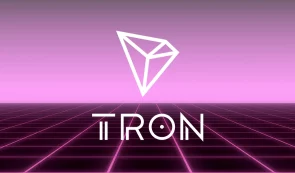What is TRON
TRON is an open-source blockchain platform that, like Ethereum, can execute smart contracts and be used to create decentralized applications (dApps).
Initially sold primarily in Asia, TRX, the network’s native cryptocurrency, has now gone global. As of November 2022, the platform has nearly 120 million registered accounts.
Founded by current CEO Justin Sun, the Tron Foundation has offices in Singapore and San Francisco. Sun is also the CEO of torrent tracker BitTorrent.
The foundation raised $70 million in 2017 through an ICO (initial coin offering) shortly before China banned digital tokens.
By March 2018, the test network, blockchain tracker, and web wallet were launched. The main TRON network was launched shortly after, in May 2018, marking the launch of Odyssey 2.0 as a technical milestone for TRON.
In June 2018, TRON changed its protocol from an ERC-20 token on Ethereum to an independent peer-to-peer network. On July 25, 2018, the TRON Foundation announced that it had completed the acquisition of BitTorrent, a peer-to-peer file-sharing service.
With this, TRON announced its independence with the creation of the genesis block along with the acquisition of BitTorrent in July 2018. Following this acquisition, in August 2018, BitTorrent founder Bram Cohen also revealed that he was leaving the company to found Chia, an alternative to Bitcoin designed to be a less energy-intensive cryptocurrency.
In February 2019, after being acquired by the Tron Foundation, BitTorrent began selling its own network-based tokens.
How TRON works
TRON uses a delegated consensus mechanism to validate transactions, which is a variation of the Proof-of-Stake (PoS) model. Proof-of-Stake is a popular, energy-efficient alternative to the original Proof-of-Work (PoW) model introduced by Bitcoin.
In a delegated PoS system, TRX holders can stack their tokens, meaning they pledge them as collateral. This allows them to vote for “super-representatives” who will confirm transactions. The votes are counted, and the super-representatives are elected every six hours.
The super-representatives are given blocks of transactions to validate. For each block, each super representative receives a block reward and a vote reward, which are shared with the super representative’s voting “partners” according to the ratio of their votes.
TRON uses a three-layer architecture with a core layer, a storage layer, and an application layer:
- The core layer performs the basic fundamental tasks for the blockchain. This includes transaction validation, account management, and smart contract reliance. It uses the Solidity smart contract language, which was originally developed for Ethereum.
- The storage layer is designed to handle complex data storage.
- Developers use the application layer to build dApps and custom wallets.
Despite TRON’s ever-expanding ecosystem of dApps, the project has been criticized for allegedly copying other people’s code and that TRON’s CEO has made money through cryptocurrency scams.
Tron’s open, decentralized platform and distributed storage technology also address a significant problem – the challenge of very few and powerful corporations controlling the Internet and its content.



